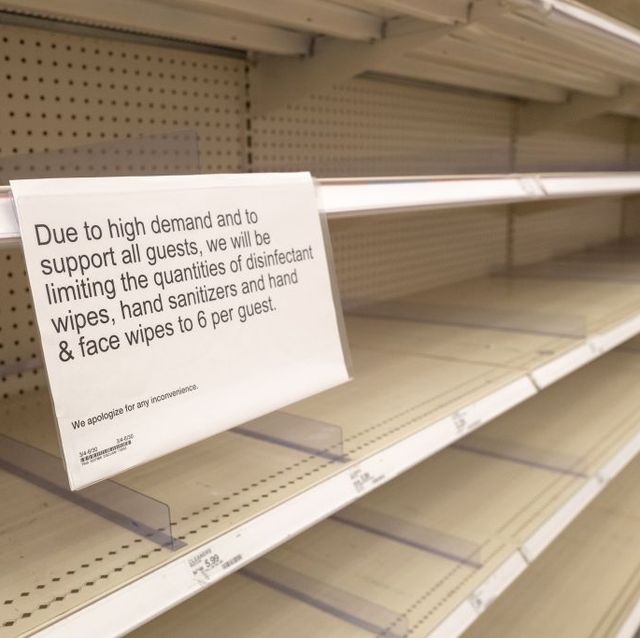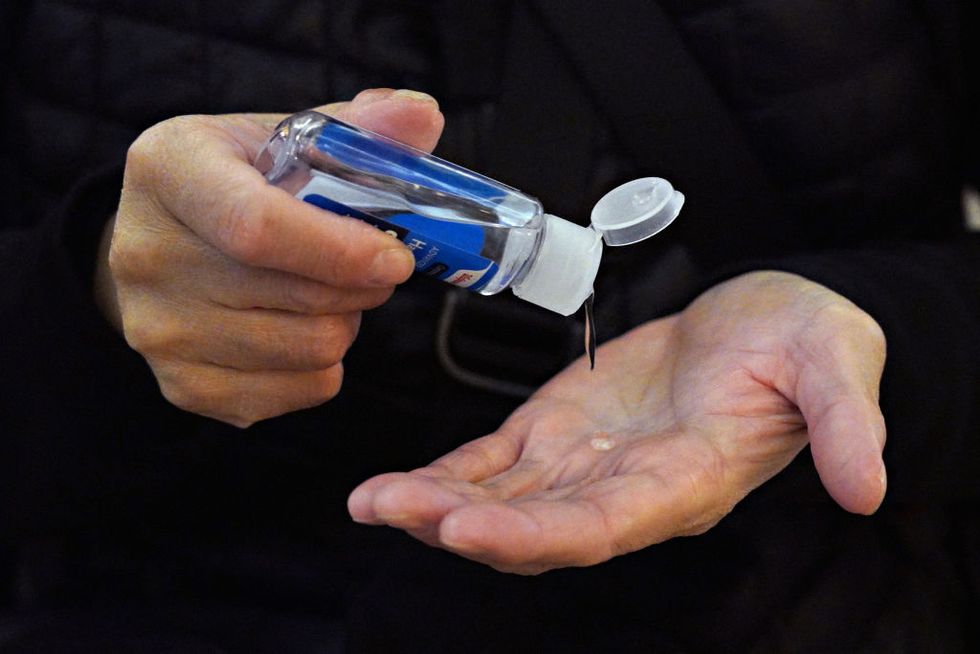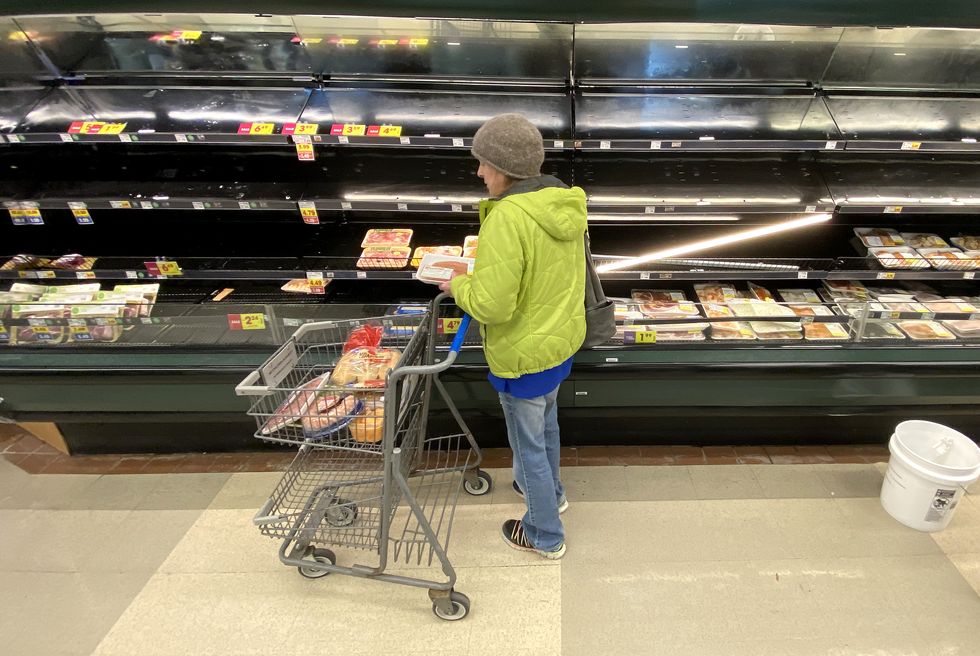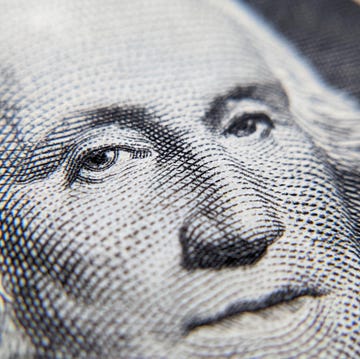- Panic hoarding of everything from hand sanitizer to fresh proteins is motivated by fear, not practicality.
- Many goods we rely on aren't endangered by logistics of the COVID-19 pandemic.
- Get ready for some dyspepsia if you're going to try to live on dry beans and aging chicken.
Americans have been making runs on their grocery and mass retail stores to buy all the dry beans, toilet paper, hand sanitizer, bread, sugar, and ... chicken (?) they can get their hands on. People bought so many respiratory masks that contractors told reporters they were turning down jobs they could no longer do safely.
Does this kind of panic accumulation make sense? Well, no—and President Trump has urged Americans to stop doing it. Not only does the average person use just 100 rolls of toilet paper per entire year, but almost all our toilet paper is still made domestically without any risk to the supply chain from travel bans.
Maybe it’s the very real psychological idea that toilet paper is something that makes our living conditions livable, or the fact that TP is cheap and easy to just throw in the cart.
One person did the math on how foolish it is, though:
What’s the deal with the other things people have decided to emergency hoard?
Hand Sanitizer
Along with respiratory masks, hand sanitizer was the earliest scapegoat of escalating stockpiling. Photos of empty drugstore shelves appeared from all corners of the country. But the only people who need to use hand sanitizer are those without access to soap and water, like point-of-sale workers or people who work at reception in medical facilities. Plus, there are people who can’t wash their hands so much without exacerbating eczema or other conditions.
A 2017 study found that people should use 3 milliliters (mL) of hand sanitizer each time. That means even the travel size 3-ounce (oz.) bottle holds nearly 30 applications, which isn’t enough for someone working with cash and customers, but is enough for days and days of home use by people who are washing their hands as directed.
This out-of-stock Target brand pump holds 32 oz., so nearly 1,000 mL, which is over 300 applications. The average normal number of times to urinate per day is between six to seven trips, so let’s round up generously to 10 per day altogether. After each of those, you wash your hands. (You’d better.) But if you relied on just hand sanitizer, that one $4 bottle would still last an entire month of bathroom trips, which is twice the length of the Centers for Disease Control and Prevention’s (CDC) current recommendation of two weeks of self isolation.
Dry Beans
While plenty of people eat beans regularly as a super healthy and nutrient-dense food, lots of people don’t. If you weren’t preparing beans from dry already, this seems like a wild time to imagine you’ll start. But what will happen if you shift from, let’s say, an average FDA calorie distribution to a diet of beans?
A one-pound bag of black beans ends up growing to 5 to 6 cups of cooked beans, where a cup has about 250 calories, 12 grams of fiber, and 14 grams of protein. If you ate just beans for every meal up to the 2,000-calorie U.S. Food and Drug Administration (FDA) standard, you’d also be eating 96 grams of fiber and 112 grams of protein. Get ready to change the math on how much toilet paper you’ll need.
Even if you mix 50/50 with white rice, that’s still 48 grams of fiber, which is way, way outside of the average American’s diet and the FDA recommendation of between 25 and 35 grams. If you’re going this route and it’s not your usual diet, maybe stick with mostly rice.
For two weeks, you’d need about 15 pounds of just dry beans. That’s still only a few big bags—not a cartful of everything you can get.
Chicken
Colleagues told me they’d seen meat counters totally emptied of fresh raw chicken. Chicken is the most dangerous food in restaurants and lasts just 1 to 2 days in the refrigerator. Are people rushing home to put all this chicken directly in the freezer? You’d be better off buying completely shelf-stable canned chicken or tuna, especially if the alternative left on the shelf is big pieces with bones in and you’re used to cooking boneless, skinless chicken breast.
Calorie-wise, boneless, skinless chicken breast is the least effective form of chicken to buy; it takes up the most room for the least nutritional density of any cut of chicken. To eat 2,000 calories in a day of boneless, skinless chicken breast, you’d need to eat more than 12 servings of 3.5 cooked ounces each.
If you wanted to buy enough chicken to last through a two-week self quarantine, you’d be bringing home pounds and pounds of the most vulnerable mainstream protein and trying to find room for it in your freezer. This just doesn’t seem like an efficient use of your space.
Instead, you could use that freezer space to make your dairy milk last 1 to 2 months. You can freeze ginger and other fresh flavorings that don’t require a crisp texture. Or you can freeze ice cube tray sections of lime juice or fresh herbs mixed in water.

Caroline Delbert is a writer, avid reader, and contributing editor at Pop Mech. She's also an enthusiast of just about everything. Her favorite topics include nuclear energy, cosmology, math of everyday things, and the philosophy of it all.
















